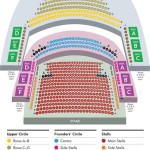CAD Programs for House Plans: A Comprehensive Overview
Computer-Aided Design (CAD) programs have revolutionized the field of architectural design, offering professionals and aspiring designers powerful tools to create precise, detailed, and visually appealing house plans. These software applications provide a digital environment where users can draft layouts, model structures in 3D, and generate construction documents with unparalleled accuracy. The adoption of CAD has significantly streamlined the design process, enabling faster iterations, improved collaboration, and reduced errors compared to traditional manual drafting methods.
The market offers a diverse array of CAD programs, each with unique features, capabilities, and pricing models. Selecting the right program depends on the specific needs of the user, considering factors such as the scale and complexity of projects, desired level of detail, budget constraints, and proficiency in using CAD software. This article provides a comprehensive overview of some of the most popular and effective CAD programs for creating house plans, highlighting their key features and benefits.
Key CAD Features for House Plan Design
A robust CAD program for house plan design should offer a range of essential features that facilitate the creation of accurate and detailed drawings. These features typically include:
Drafting and Editing Tools: The core functionality of any CAD program lies in its drafting and editing capabilities. These tools allow users to draw lines, shapes, and curves with precision, and to modify these elements using functions such as trim, extend, offset, and fillet. A good program should offer a variety of drawing modes, including orthogonal drawing (restricting lines to horizontal and vertical axes), polar tracking (guiding the cursor along specific angles), and object snap (allowing the cursor to snap to specific points on existing objects). Advanced editing features like array, mirror, and rotate are also crucial for efficient design.
Parametric Modeling: Parametric modeling allows users to define relationships between different elements in a design. For example, the height of a wall can be linked to the overall height of the building. If the building height is changed, the wall height automatically updates accordingly. This feature is particularly useful for complex designs and ensures consistency throughout the project. It enables designers to make changes more efficiently and reduces the risk of errors caused by manual adjustments.
Layer Management: Layer management is a critical feature for organizing and controlling the visibility of different elements in a drawing. Users can assign different elements to different layers, such as walls, doors, windows, furniture, and electrical fixtures. Each layer can be individually turned on or off, allowing users to focus on specific aspects of the design without being distracted by other elements. Layer management also simplifies the process of creating different types of drawings, such as floor plans, elevations, and sections, by selectively displaying only the relevant layers.
Symbol Libraries: Symbol libraries provide a collection of pre-drawn objects, such as doors, windows, furniture, and appliances, that can be inserted into a drawing. This saves time and effort by eliminating the need to draw these objects from scratch. A good CAD program should offer a comprehensive library of symbols, and it should also allow users to create and save their own custom symbols. Some programs offer specialized symbol libraries tailored to architectural design, including symbols for plumbing fixtures, electrical components, and structural elements.
Annotation and Dimensioning: Annotation and dimensioning tools are essential for adding notes, labels, and dimensions to a drawing. These tools allow users to clearly communicate the size, location, and orientation of different elements in the design. A good CAD program should offer a variety of annotation styles, including text, leaders, and callouts. It should also provide automatic dimensioning capabilities, which automatically calculate and display the dimensions of objects. Dimension settings can usually be customized to comply with specific architectural standards.
3D Modeling and Visualization: Many CAD programs offer 3D modeling capabilities, allowing users to create realistic representations of their house plans. 3D modeling enables designers to visualize the spatial relationships of different elements in the design and to identify potential problems before construction begins. Some programs offer advanced rendering features, which allow users to create photorealistic images and animations of their designs. These visualizations can be used to present the design to clients or to create marketing materials.
Construction Documentation: CAD programs can generate construction documents, such as floor plans, elevations, sections, and details, which are used by builders to construct the house. These documents typically include dimensions, annotations, and symbols, as well as information about materials and construction methods. A good CAD program should offer tools for creating and managing these documents, ensuring that they are accurate, consistent, and compliant with building codes.
Popular CAD Programs for House Plans
Several CAD programs are widely used for creating house plans. Each program has its strengths and weaknesses, making some more suitable for specific needs than others. The following sections provide an overview of some of the most popular options:
AutoCAD: AutoCAD is perhaps the most widely recognized CAD program in the industry. Developed by Autodesk, it is a powerful and versatile tool suitable for a wide range of design applications, including architecture, engineering, and manufacturing. AutoCAD offers a comprehensive set of drafting and editing tools, as well as advanced features such as parametric modeling and 3D visualization. It supports a wide range of file formats and can be customized with add-ons and extensions. Its widespread use and extensive online resources make it a valuable option for both beginners and experienced designers. However, AutoCAD can be relatively expensive, and its complexity may be overwhelming for users who are new to CAD.
AutoCAD Architecture: AutoCAD Architecture is a specialized version of AutoCAD specifically designed for architectural design. It includes all the features of AutoCAD, as well as additional tools and content tailored to the needs of architects and building designers. AutoCAD Architecture offers intelligent building objects, such as walls, doors, and windows, that can be easily inserted and modified. It also provides automated features for creating elevations, sections, and schedules. This specialization streamlines the architectural design process compared to using standard AutoCAD alone.
SketchUp: SketchUp is a user-friendly 3D modeling program that is popular among architects, interior designers, and hobbyists. It is known for its intuitive interface and ease of use, making it a good option for beginners. SketchUp allows users to quickly create 3D models of buildings and other objects using simple drawing tools. It also offers a wide range of extensions and plugins that can add functionality, such as rendering and animation. While SketchUp is primarily a 3D modeling program, it can also be used to create 2D drawings and construction documents. SketchUp is available in both free and paid versions. The free version, SketchUp Free, is a web-based application with limited features. The paid version, SketchUp Pro, offers more advanced features and offline access.
Chief Architect: Chief Architect is a CAD program specifically designed for residential design. It offers a comprehensive set of tools for creating floor plans, elevations, sections, and 3D models of houses. Chief Architect is known for its ease of use and automated features, such as automatic roof generation and floor framing. It also includes a library of pre-drawn objects and materials, as well as tools for creating photorealistic renderings. Chief Architect is a popular choice among residential designers and builders.
Revit: Revit, also developed by Autodesk, is a building information modeling (BIM) software application. BIM is a process of creating and managing digital representations of physical and functional characteristics of places. Revit goes beyond traditional CAD by incorporating information about the building's components, such as materials, costs, and performance data. This allows users to create intelligent models that can be used for design, construction, and facility management. Revit is a powerful tool for complex projects, but it can be more difficult to learn than other CAD programs. It is often used in large architectural firms and for commercial projects.
ArchiCAD: ArchiCAD is another popular BIM software application used by architects and building designers. It offers similar features to Revit, including parametric modeling, 3D visualization, and construction documentation. ArchiCAD is known for its intuitive interface and its focus on collaboration. It allows multiple users to work on the same project simultaneously, making it ideal for team-based environments.
Factors to Consider When Choosing a CAD Program
Selecting the right CAD program for house plan design requires careful consideration of several factors. Here are some key aspects to evaluate:
Ease of Use: The ease of use of a CAD program is a crucial factor, especially for beginners. A program with an intuitive interface and clear documentation can significantly reduce the learning curve and allow users to quickly become productive. Consider whether the program's interface aligns with your design workflow and whether it offers tutorials or other resources to help you learn the software.
Features and Functionality: The features and functionality of a CAD program should align with the specific needs of the project. If you primarily work on residential projects, a program like Chief Architect may be a good choice. If you need advanced 3D modeling and visualization capabilities, a program like SketchUp or Revit may be more suitable. Consider the types of projects you typically work on and the features that are most important to you.
Price: CAD programs can range in price from free to several thousand dollars per year. Consider your budget and the value you will receive from the software. Free programs like SketchUp Free may be sufficient for basic design tasks, while more expensive programs like AutoCAD or Revit offer advanced features and functionality. Many CAD vendors offer subscription-based licensing, which can be a more affordable option for users who do not want to purchase a perpetual license.
Compatibility: Ensure that the CAD program is compatible with your computer's operating system and hardware. Consider the minimum system requirements and whether your computer meets them. Also, check whether the program supports the file formats you need to work with, such as DWG, DXF, and PDF.
Support and Training: Choose a CAD program that offers good support and training resources. This can include online documentation, tutorials, forums, and technical support. A good support system can help you resolve issues quickly and learn how to use the software effectively.
Integration with Other Software: Consider whether the CAD program can integrate with other software that you use, such as rendering programs, structural analysis software, or project management tools. Integration can streamline your workflow and improve communication between different disciplines.
By carefully evaluating these factors, designers can choose a CAD program that meets their specific needs and helps them create accurate, detailed, and visually appealing house plans. The right program can significantly enhance the design process, improve collaboration, and reduce errors, leading to better outcomes for both designers and clients.

Floor Plan Create 2d 3d Plans Autodesk

Floor Plan Quickly Create Plans With Cad Pro

Is Autocad The Best Floor Plan For Estate Agents Elements Property

Building Design Plans Cad Pro

Small House Plans Popular Designs Layouts

Easy House Drafting Cad Pro

Home Design Your House

Easy Home Building Floor Plan Cad Pro

11 Best Free Floor Plan For 2024

Small House Plans Popular Designs Layouts








